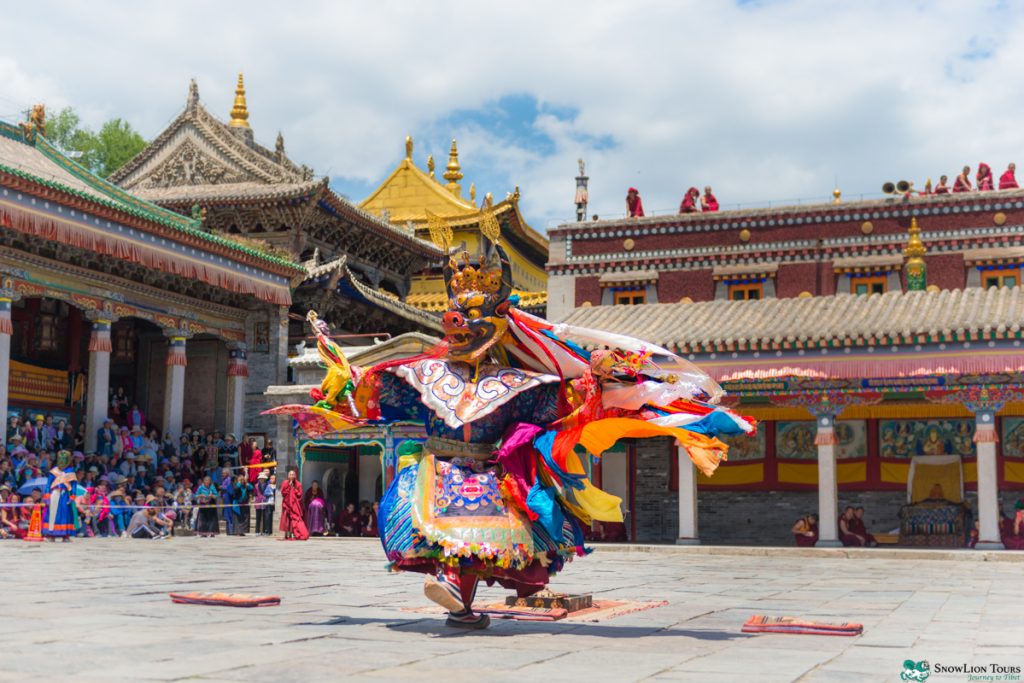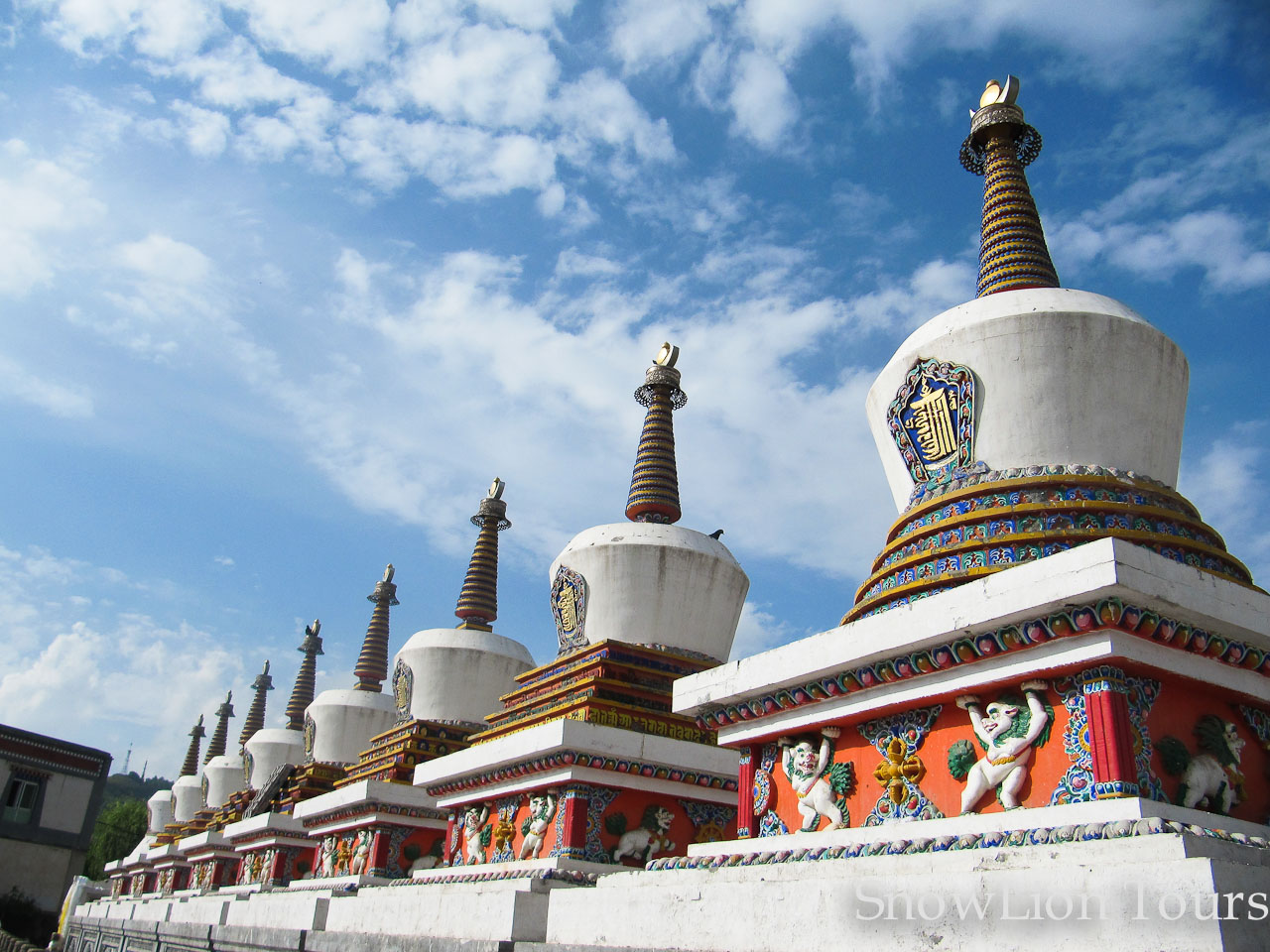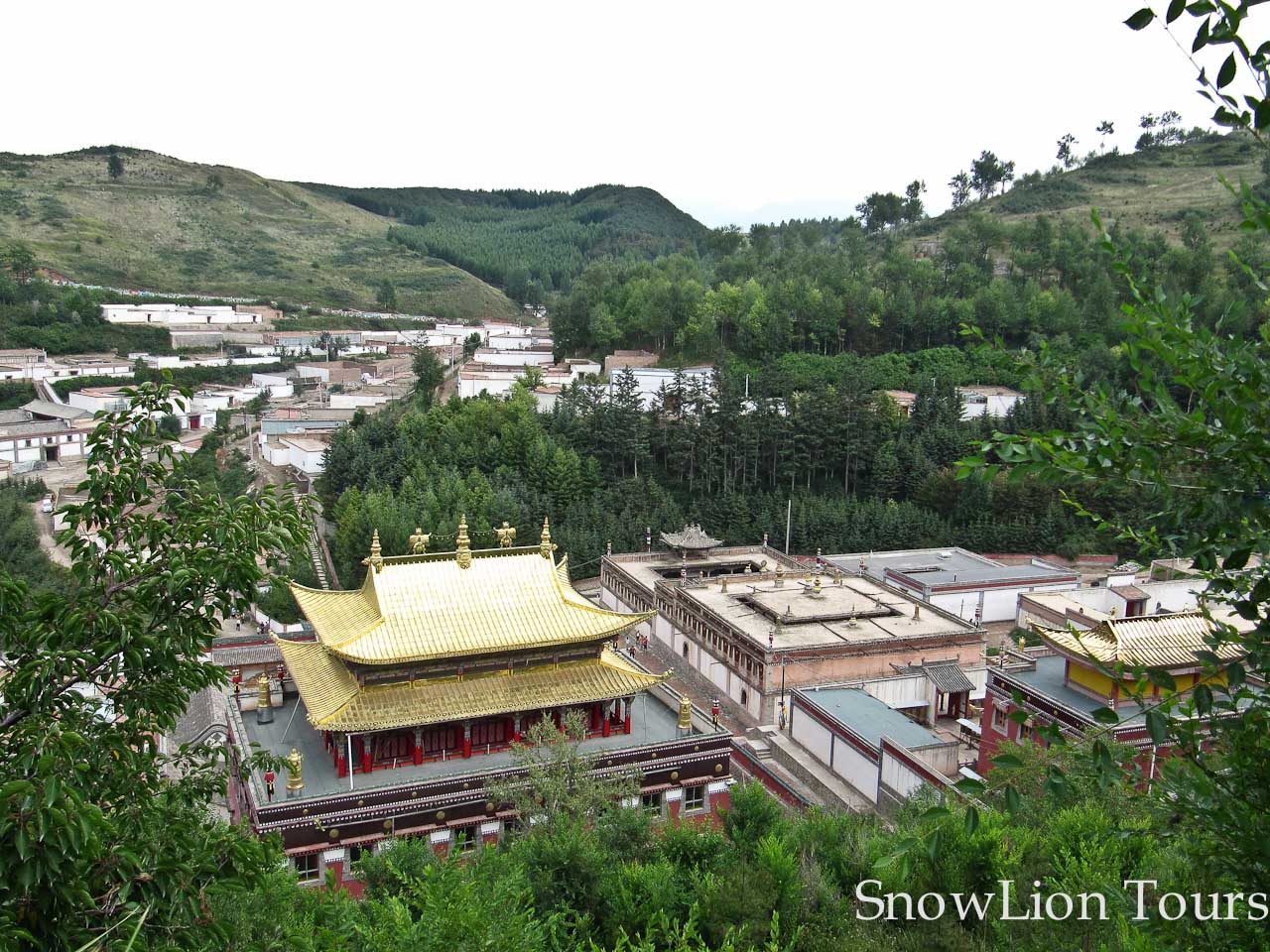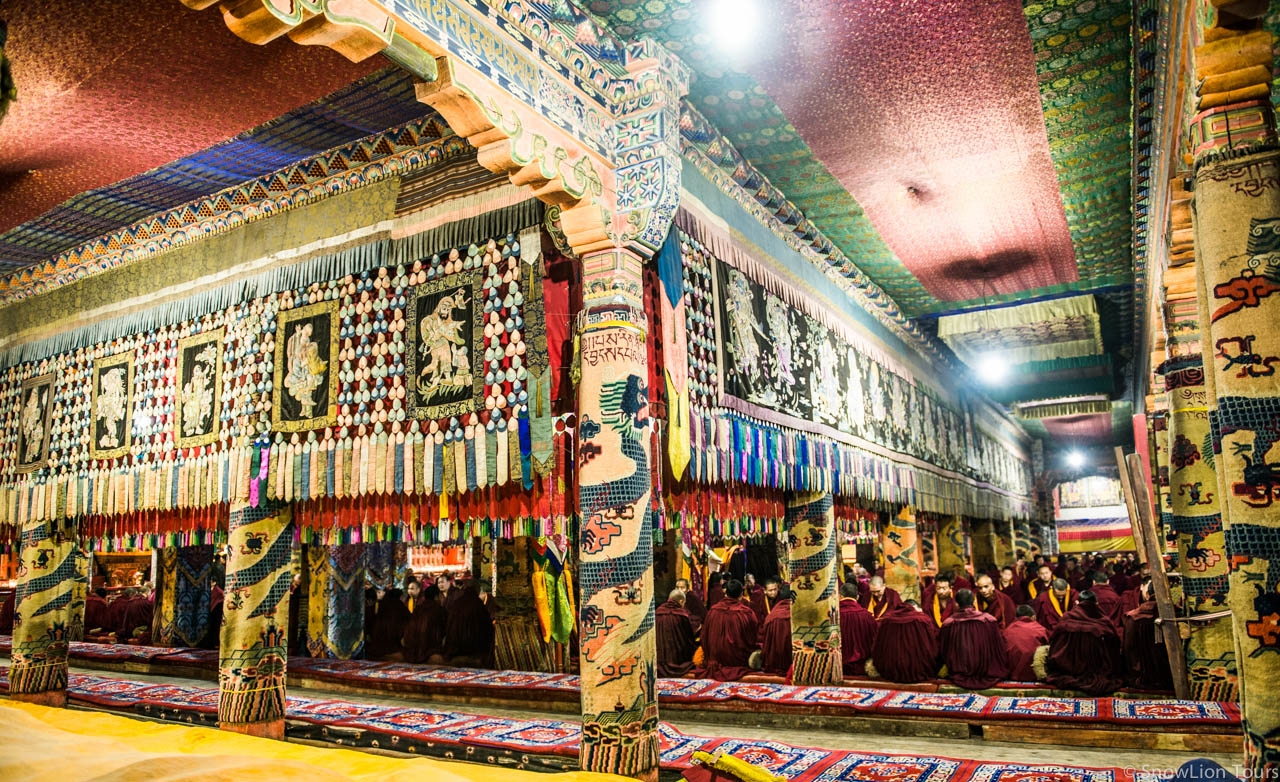Kumbum Monastery (Ch Ta’er si) is one of the six great monasteries of the Gelugpa school of Tibetan Buddhism, is famous for being the birthplace of the great religious reformer Tsongkhapa. The full name is Kumbum Jampaling Monastery. It is a wonderful place to check out Tibetan religious culture, Tibetan architecture, and Tibetan art. Highlights at the monastery include a large butter sculpture, murals, and applique embroidery. Another highlight is the daily monastic debating holds at the assembly court a front of the Assembly hall 5-6 pm.
Kumbum Monastery is located 25km to the west from Xining. The capital city of Qinghai province. The monastery houses about 600 monks. There were more than 2500monks in this monastery when it peak.
Kumbum Monastery (ch Ta’er si),was founded in 1583 by the Third Dalai Lama, Sonam-Gyatso (1543-1588). It was built at the site where Tsongkhapa (1357-1419), the founder of the Gelugpa Tradition, had been born. According to Tibetan Text books, a drop of blood fell from Tsongkhapa’s umbilical cord when it was cut after his birth. From this drop grew a wondrous white sandalwood tree. It has about 100,000 leaves, which it never sheds. In Tibetan, the number 100,000 merely signifies a very large number and is not meant literally. On each leaf is an image of the Buddha Sinhanada (Seng-ge sgra). On the bark of the branches and trunk are the designs of the seed syllables and hand implements of this Buddha. In the future, Tsongkhapa will take birth as Sinhanada, the eleventh Buddha of the 1,000 who will grace the earth during this fortunate eon.

Festival in Kumbum Monastery
Kumbum Monastery complex consists with Serdong Chenmo was originally built by Tsongkhapa’s mother in 1379 on the spot where the sandalwood tree is said to have sprung from the ground where Tsongkhapa’s placenta fell at the time of his birth.








